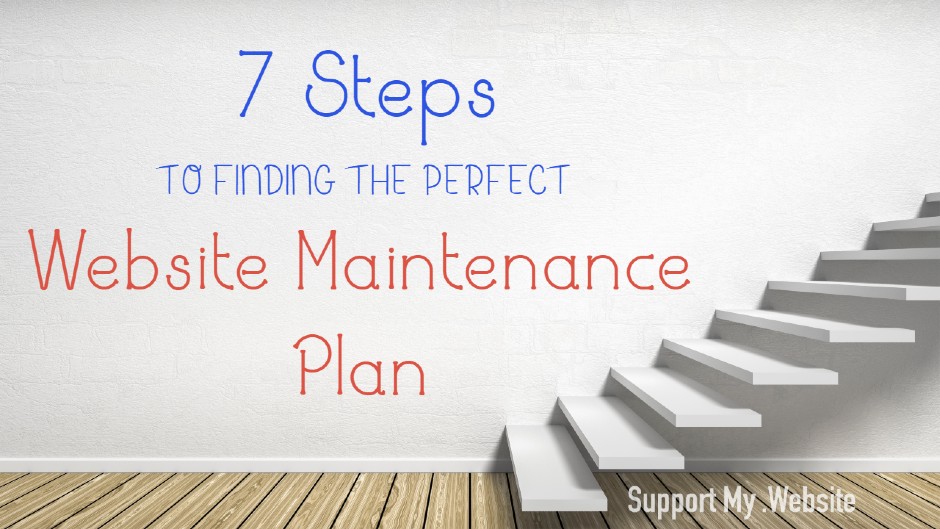Website Maintenance Packages Come in All Shapes and Sizes
If you choose a website maintenance package without weighing your options you’re likely going to be paying for things you don’t need or not getting all the services your website really does need.
In this article, we are going to cover operations, security, support, and marketing services so you can determine what items you need so you can choose the best monthly website maintenance plan for your site.
Need some help deciding what maintenance options your website really needs?
Schedule a free one-on-one website assessment today.
Small Business Website Maintenance: How to Compare Step-By-Step
A small to medium-sized (SMB) has very different needs when compared to an enterprise business. And fortunately what means very different price points when it comes to support and security.
Did you know?
Over 99% of businesses in the US are SMBs.
There are tons of companies that offer website help and support, but not all are created equally. The good news is that there’s a straightforward way to find the best solution for your specific website’s needs.

Ready? Here are the steps:
- Determine what resources you currently have for website security, support, and marketing data management.
- Identify the gaps you know you have to fill.
- As you shop around for a plan that fills those gaps, take note of other services you could really use, but didn’t have on your list of gaps to fill.
- Compare a few website maintenance packages from different companies to see how the costs stack up.
- Write down questions you have for each company.
- Schedule a meeting with each company.
- Make your final decision!
Sounds simple? Let’s dig in!
1. Assess Your Current Situation
You may have your website currently floating unattended through the ether, or you may have a bunch of items on lock.
Not sure what’s being taken care of, who’s in charge of it, and how well the tasks are documents and processes followed? Start out asking yourself
What is IT taking care of?
The first thing to consider is whether your business currently has website security covered, or partially covered by an internal IT person or team.
If so, the next steps are to determine exactly what responsibilities IT has, and how information is reported. There may be additional items you can add to IT’s agenda or items you can remove from the workload.
Pro Tip:
A lot of SMBs use a mix of an in-house IT person or team in conjunction with a supplementary website maintenance package. This is especially useful if your IT department only covers the basics of website security or if your website was built by a third party company.
Is someone else in charge of maintenance?
Do you work with any third parties to maintain your website? If so, follow the same process as you would for assessing your IT person or team.
If you’re not sure who the heck is in charge of this stuff, ask your team,
“If the website crashed today, who would fix it?”

If the answer is crickets, that’s bad news since more bugs won’t be any help!
If that’s you, getting a disaster plan in place should be your top priority.
2. Identify the gaps you know you have to fill
This one is pretty straight-forward. As you figure out what is already covered, any items you know you need but don’t have a handle on should be noted.
3. Research what you need to fill the gaps
Now that you have a list of tasks you definitely need someone to take care of (most likely security items) you can start shopping around for maintenance packages that include those items.
But what if you don’t know exactly what you need?
If you’re not sure, it’s alright. That’s most people.
Here are some of the most common items business websites might want to look for in a website maintenance plan.
| Security | Support | Marketing |
| CMS Core Updates | On-Demand Support Time | Website Analytics |
| Plugin and Module Updates | Uptime Testing and Notifications | Online Review Management |
| Security and Malware Testing | Domain Name Renewal | SEO Analysis |
| Off-Site Backups | Contact Form Testing | Broken Link Reporting |
| SSL/TLS Management | ADA Compliance Monitoring and Reporting | Mobile Responsiveness Testing |
| Crash and Hacking Support | Email, Phone, and Video Support Options | Load Speed Testing |
4. Research and compare website maintenance packages
By now you will likely have a more detailed list of what you need, including things you didn’t know you needed. Gather a list of companies that offer what you’re looking for in your price range and take notes about what makes each one a good candidate.
Try and narrow it down to 2-4 options.
5. Write down questions you have for each company
You may have different questions for different maintenance companies based on the information available on their website. To get started, consider questions like:
- Is there any start-up cost?
- How long is the contract?
- What reports do you provide each month?
- What website maintenance package do you think I need and why?
6. Schedule a meeting with each company
This is your chance to gauge the experience and knowledge of the team as well as to get a “gut-feeling’ about each one.
Pro Tip
The person you meet with should assess your website’s specific needs honestly instead of just trying to sell you on something.
7. Make your final decision
This one is pretty self-explanatory.
SMB Website Maintenance Costs

The cost of monthly website maintenance plans for small or mid-sized businesses can vary from $15 to $5,000. It’s a huge range because the type of websites and data collected vary so much.
Let’s look at an example of a very simple business site and compare it to business with much more complex website needs.
Simple SMB Website Maintenance
For a simple one-page informational site built on a platform like Squarespace or Wix site that is fairly static and does not collect any information from site visitors (ie. doesn’t sell anything or have a contact form) is probably just going to need someone to keep up with…
- Domain Renewal
- Website Hosting
A simple site like this could run you between $15 and $50 per month.
Although these are the absolute must-haves, a small site like this may also benefit from…
- Website Analytics
- Site Speed Testing
- SSL certificate management
- SEO Analysis
Pro Tip:
Even for a small business, the website exists to make money for the company. So considering website maintenance packages that include the tools and data to help you make the best decisions on how your time and money are best spent is certainly advisable.
Complex SMB Website Maintenance
In contrast, a feature-rich e-commerce store built on a platform like Magento with multiple product types, customer profiles, and sales pages as well as connections to several other platforms is going to need a whole lot more in the way of security, updates, general support, and marketing reports.
A business like this will want to seek out robust security, marketing, and support coverage in their monthly website maintenance package. If you fall into this category, look for items like…
- CMS Core and Plugin Updates
- Offsite Backups
- Malware and Advanced Security Testing
- Uptime Testing
- Contact Form Testing
- Broken Link Testing
- Reputation Management
- Mobile Responsiveness Checking
- On-Demand Technical Support
- ADA Compliance Testing
For a complex website, a maintenance package like this (in addition to the items listed for the simple website) could run you between $450 and $2,000 per month.
Average National Costs Per Service and Website Type
Of course, there’s a lot of acreage in between these as well. We’ve put together a comprehensive article detailing the average cost per service to help you determine what you might need and how much it will cost.
Comparing Website Maintenance Packages
To recap, when you’re shopping around for the right plan for your website take these steps:
- Determine what resources you currently have for website security, support, and marketing data management.
- Identify the gaps you know you have to fill.
- As you shop around for a plan that fills those gaps, take note of other services you could really use, but didn’t have on your list of gaps to fill.
- Compare a few website maintenance packages from different companies to see how the costs stack up.
- Narrow your choices down to 3 companies.
- Write down questions you have for each company.
- Schedule a meeting with each company. (The person you meet with should assess your website’s specific needs honestly instead of just trying to sell you on something.)
- Make your final decision!
Once you’ve signed up your website maintenance package you can go back to focusing on the zillion other things that running your business entails.
If you follow these steps, you’re sure to find an exceptional company that will baby your website, and protect and spoil it the way it deserves to be pampered.
Looking for a short-cut?
Get a professional website analysis today for free!
